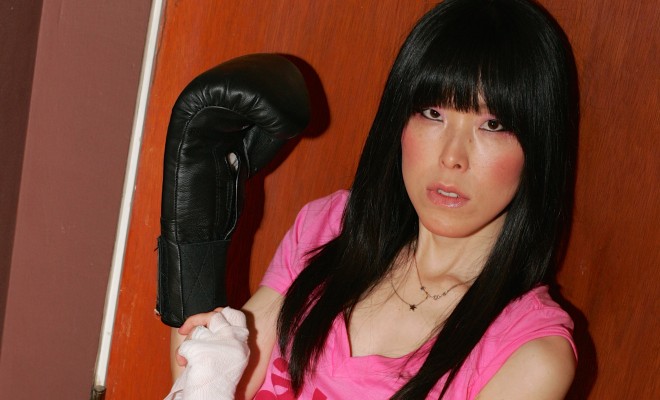
Yumiko Kayukawa
Yumiko Kayukawa is a Japanese artist residing and working in Seattle, Washington where she moved to from Japan in 2005. Her work is inspired by nature and executed in a style reminiscent of traditional Japanese art and contemporary Manga. She finds inspiration in the sights and sounds of American pop culture. She has said that she loves American Rock & Roll, film and fashion.
Yumiko grew up in the small town of Naie in Hokkaido, Japan where she explored the natural world around her. Yumiko studied art at Bisen Art School in Sapporo, Japan. Her work has been exhibited internationally at galleries in cities including London, New York, Berlin, Hong Kong, Los Angeles and Seattle. She has published two books of her work.
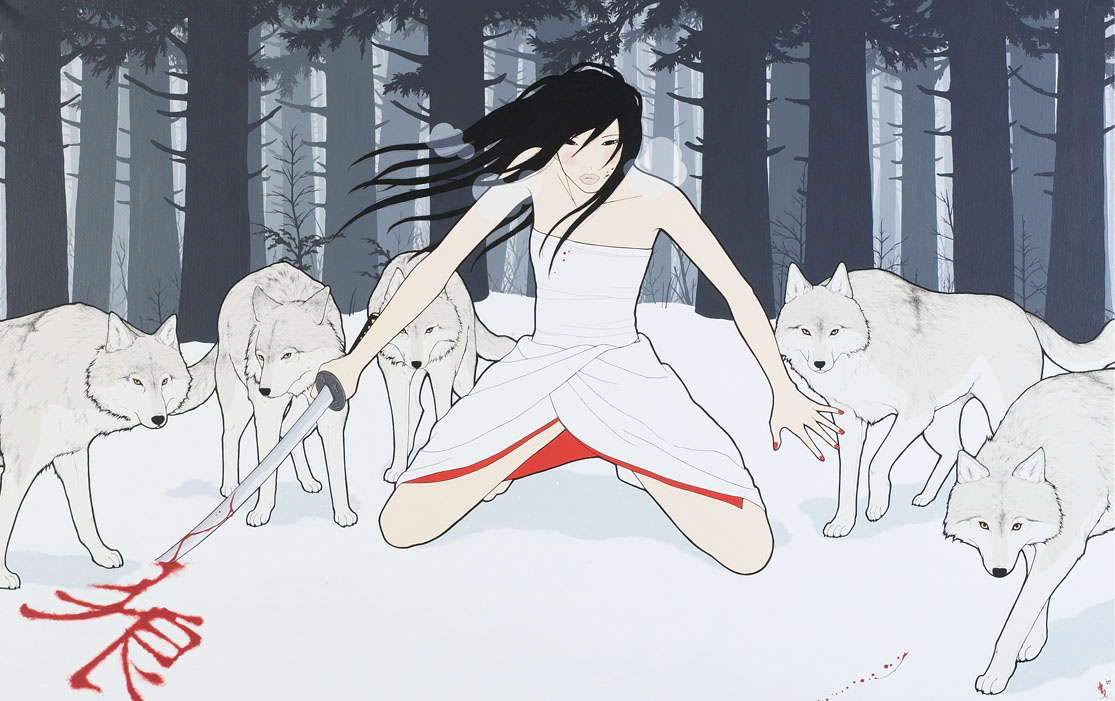 1. Konnichiwa Yumiko! It is so nice to chat with you.
1. Konnichiwa Yumiko! It is so nice to chat with you.
Konnichiwa and Hajimemashite, Ninja Girl! Thank you for this opportunity.
2. Could you tell us about your time growing up in Naie in Hokkaido, Japan? What is the place like?
It’s a very small town, where population of about 6,000. No movie theatre, no museum, and everyone knows everyone. Nature was my playground.
3. Located in the northern region of Japan, I’d imagine there must be four distinct seasons in Naie. What was it like experiencing the seasons there?
It’s a Snow country. Winter is icy cold. Summer is shorter and cooler than other part of Japan.
4. What types of animals did you discover in the region? And the vegetation? What are the trees and plants like?
Trees are much shorter to compare with Seattle’s. There are fox, weasel, frog, salamander and many kind of birds.
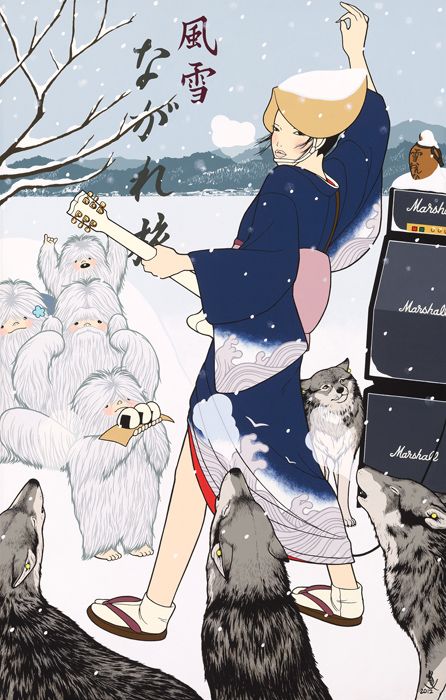 5. When you were a teenager you discovered American pop culture. It sounds like you immediately fell in love the style!
5. When you were a teenager you discovered American pop culture. It sounds like you immediately fell in love the style!
Can you talk about some of the things you enjoyed about American pop? For example, what were some of the bands that you were listening to? Did you have a favorite musician – a vocalist for example?
I love rock n roll, but especially into glam, hard rock, heavy metal, or any type of “hair bands”.
One of my favorite bands was Hanoi Rocks from Finland. My first rock concert was Motley Crue at (Nippon) Budokan. I am MTV generation, and was a music video lover.
6. What were some of the movies you watched? Were there particular actors or actresses that you especially found interesting?
I mostly love “Man movies” Such as Rocky, Godfather, Mad Max, etc. I love deep stories, also action or martial art films. And horror films as well. I love Sylvester Stallone or Al Pachino’s early films. I love Kevin Costner’s “Fandango” also. I enjoy these movies before the actors became famous.
7. You also mention American fashion as having an influence on you when you were growing up. What were some of the designs you liked? Who was wearing the clothes that you really loved?
I’m not a designer brand girl. But my fashion inspirations are from movies, rock star’s pinups or music videos.
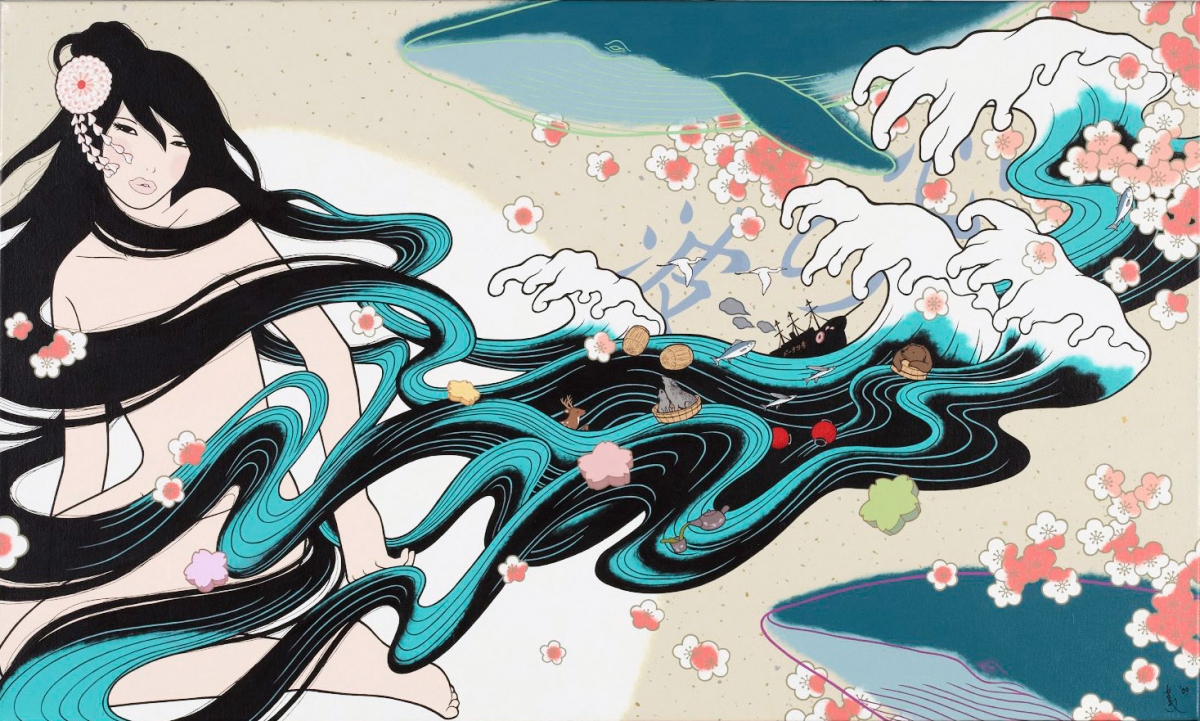 8. Did you read American comic books?
8. Did you read American comic books?
I couldn’t read them in English, but I enjoyed and studied from some comic books such as Spiderman.
9. What was the manga feature you created when you were 18?
I was writing and illustrating Manga for Shueisha’s Margaret. It was stories of family and romance.
10. After leaving Naie you attended the Bisen Art School in Sapporo. Can you talk to us about the education you received here?
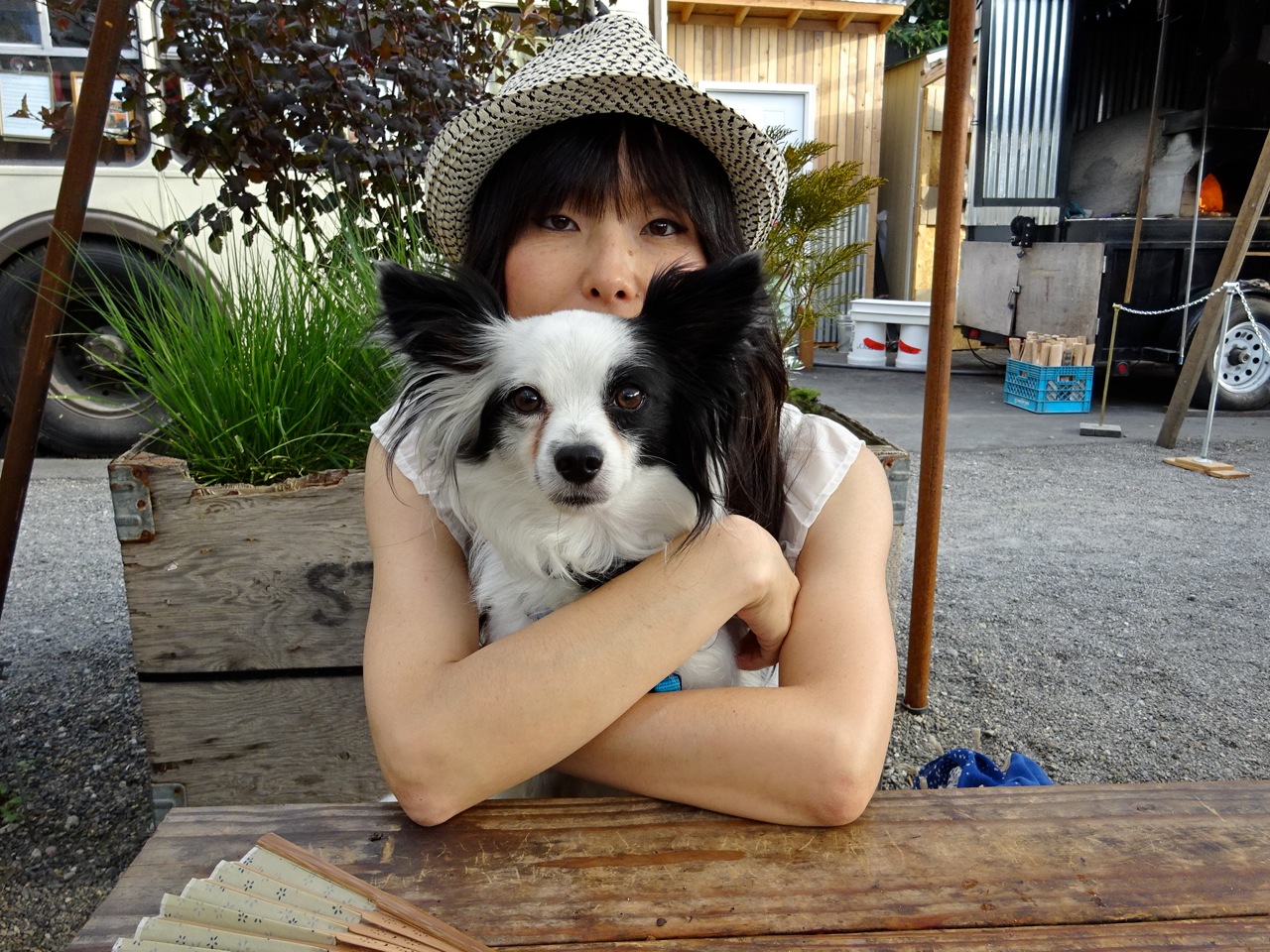 What types of classes were you taking? It was clear you were drawn to pop culture and manga early on. Did you pursue these interests while attending Bisen Art School?
What types of classes were you taking? It was clear you were drawn to pop culture and manga early on. Did you pursue these interests while attending Bisen Art School?
I was still drawing Manga while I was attending school. Because I knew to make a living with Manga isn’t easy. I wanted to learn skills at a professional school. I studied commercial design, graphic design and illustrations. I learned how to use acrylic paints at this time.
11. Did you continue to follow American pop culture while in school at Bisen?
Yes. That was all my life.
12. Were you able to maintain a connection with the natural world while in art school and were you able to use your interest in the natural world whilst creating projects at the school?
Wildlife wasn’t my theme at the time. Although I always loved draw or paint animals.
1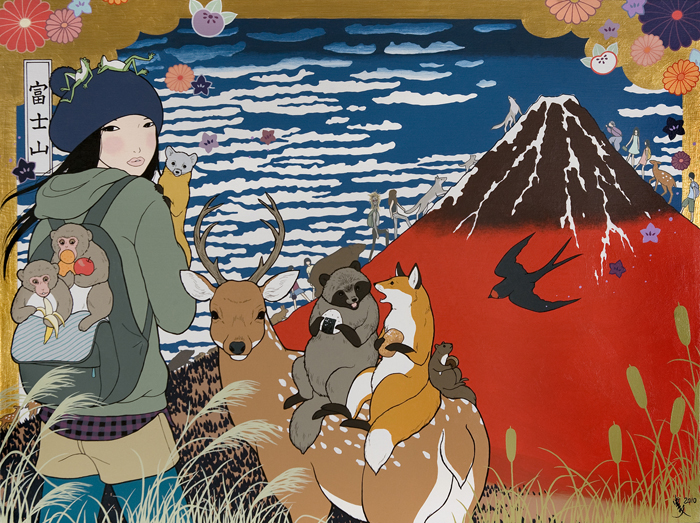 3. While your affinity for pop culture and manga can clearly be seen in your art work, I can see there is a deeper sense of understanding of the tradition of Japanese art hiding below the layers of bright colors. I think your work can be traced back to traditional Japanese works of art – the wood block prints of Hokusai and Hiroshige for example. Did you undertake a study of the history of Japanese art while at Bisen, or would you say this connection with your country’s art history is more an organic assimilation?
3. While your affinity for pop culture and manga can clearly be seen in your art work, I can see there is a deeper sense of understanding of the tradition of Japanese art hiding below the layers of bright colors. I think your work can be traced back to traditional Japanese works of art – the wood block prints of Hokusai and Hiroshige for example. Did you undertake a study of the history of Japanese art while at Bisen, or would you say this connection with your country’s art history is more an organic assimilation?
I hear that my artwork looks influenced by Ukiyoe. But I’ve never studied them seriously. Bisen wasn’t a school to teach that kind of thing. Although I am influenced by any Japanese tradition I encountered while growing up.
14. There are also references to the Japanese Kawaii culture evident in many of your pieces. Were you exposed to this culture when living Japan? Is it something you participated in or do you see yourself as more of an outside observer?
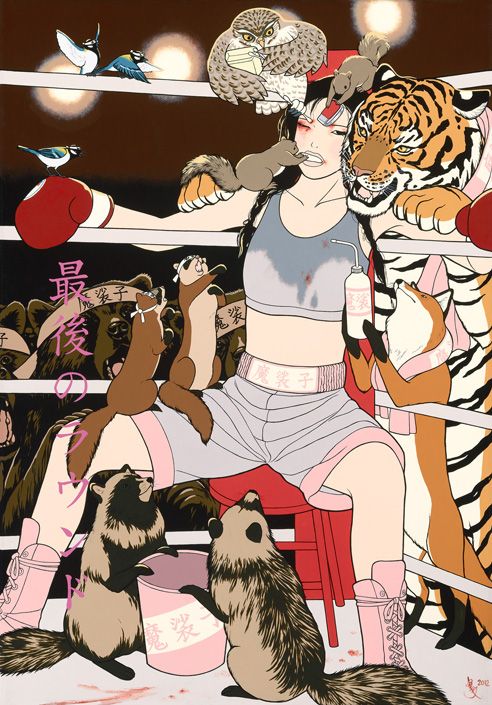 As I grew up in Japan, I’ve never thought about what Kawaii is. It’s our habit to say that word for anything. In Japan, there are many kawaii designs for any item, and I didn’t realize that we are unique in that way until I moved to the US.
As I grew up in Japan, I’ve never thought about what Kawaii is. It’s our habit to say that word for anything. In Japan, there are many kawaii designs for any item, and I didn’t realize that we are unique in that way until I moved to the US.
15. I’m curious to know why you chose to move to Seattle? I can see there are similarities between Naie and Seattle – the surrounding natural environment is immense and there are many opportunities to find connections with the natural world.
At first, it was just a visit to Seattle. And I really loved this town. Later I met, and married my husband who is from here. So naturally I moved to Seattle.
16. What was it that drew you to Seattle as opposed to some other place in the United States?
There is a good balance of town and nature. There is lots of green. People are kind to animals. People are pretty relaxed. I love it.
17. Looking through your catalogue I can see that your work has matured over the years. Your technique has improved and your subject matter has become more diverse and sophisticated. However, all of your work is clearly recognizable and the general look and arrangement of your compositions has varied only slightly. It is obvious you have a clear idea in your head of what your art should look like.
Do you go through many drafts before settling on a final composition and begin work on a piece?
When an idea comes up, I just go ahead to start drawing. Composition and more ideas will occur in the drawing process.
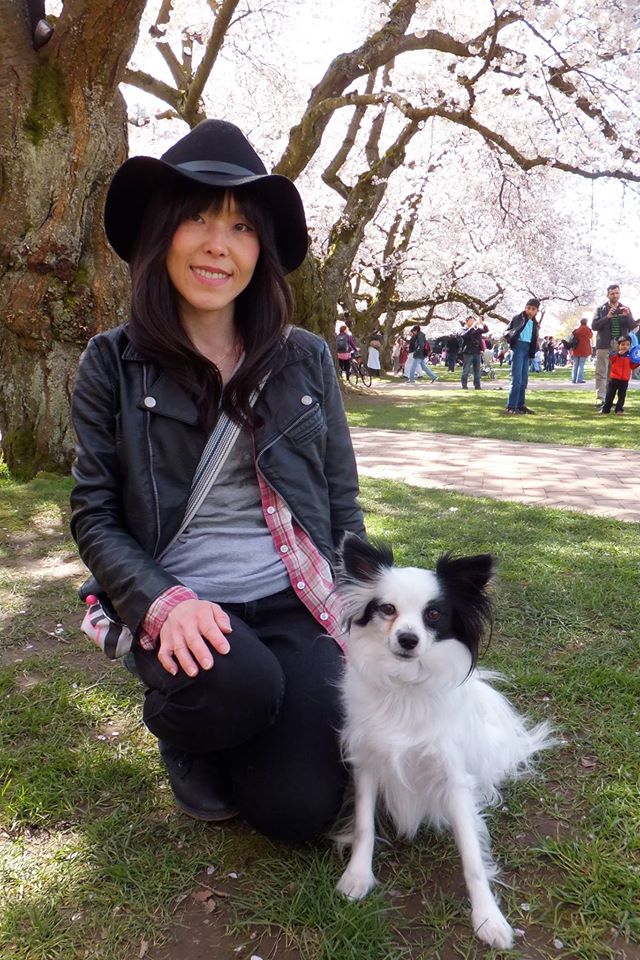 18. How do you derive inspiration for each piece?
18. How do you derive inspiration for each piece?
They are from any directions through my life. Sometimes it’s from nature TV shows, movies, or just from conversations with my friends.
19. Each piece contains a unique situation while maintaining the same basic pattern of subject matter. There is a background natural environment, some type of animal relating to this environment and the recurring presence of an Asian women who is engaged in some type of activity. While she may be accompanied by other human characters from time to time, it is clear that this woman is the sole occupant and owner of the space within your canvasses.
Is the woman in your images a self-portrait? Or is she an alter-ego, something akin to Max Ernst’s loplop?
It’s not my self-portrait. They are individuals, and a symbol of mankind. They show the relationship between nature and us.
20. Does this woman have a name?
No.
 21. Do the subjects depicted in each canvas relate to your personal life?
21. Do the subjects depicted in each canvas relate to your personal life?
Yes, They are all my vision, experiences and opinions.
22. What’s interesting about the tableau you have created over the years is that the wild animals are so accepting of the young woman who is occupying the scene. In fact, many times they take on the characteristics of humans, even performing tasks meant for humans – pounding mochi for example.
The animals depicted come from every conceivable climate and natural environment – there’s elephants, killer whales, alligators, flamingoes, wolves. I’m curious to know where the inspiration for the use of these animals comes from? Have you discovered these animals during your travels? Or do the animals used relate to the general theme for the piece you are trying to create?
The animals are picked at random, but I love to try draw many type of them. Sometimes I will think of what kind of animals will fits in a painting. Or sometimes I just get a passion to draw specific animal.
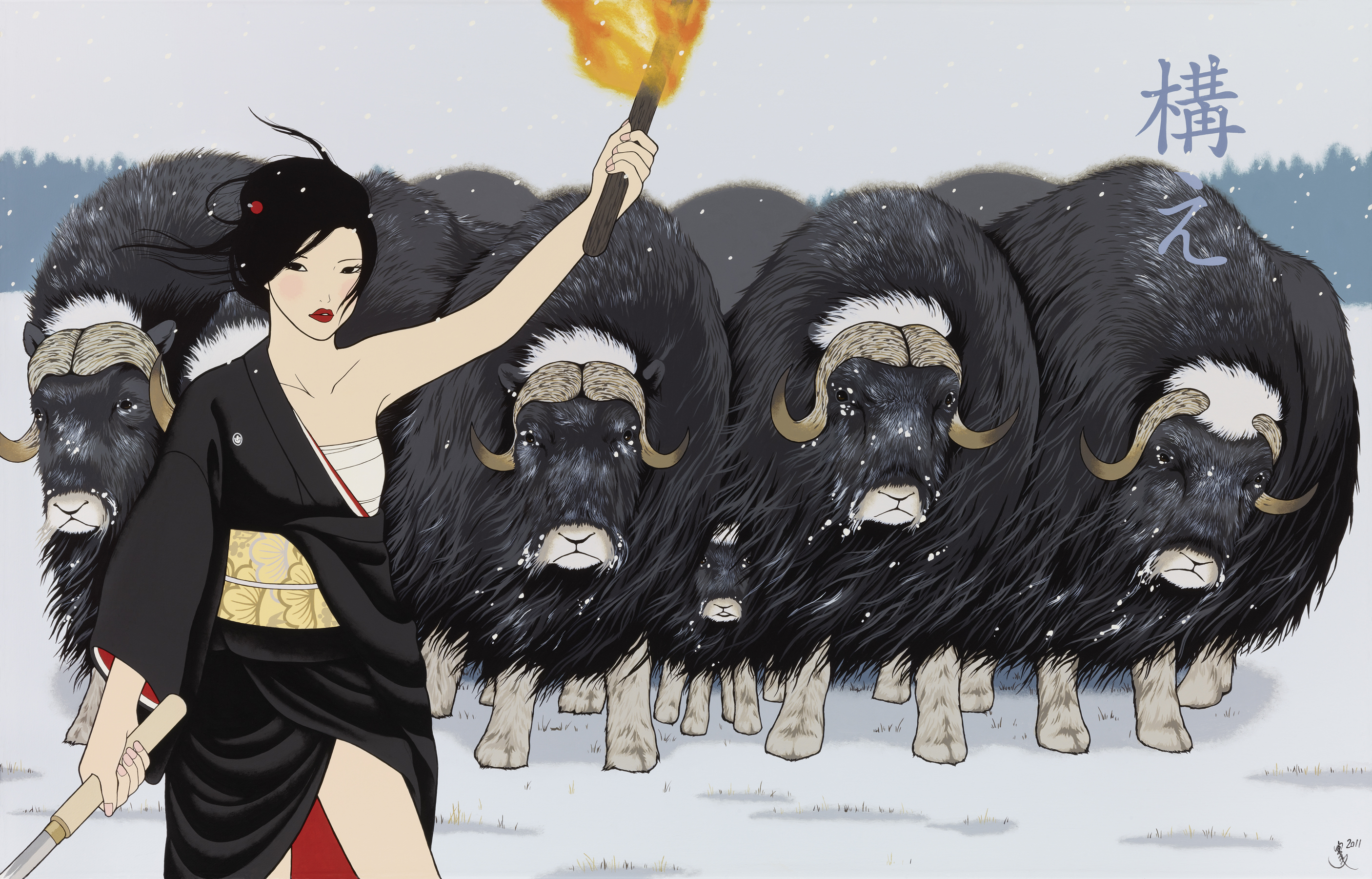 23. How do you feel about the relationship that exists between the woman in the paintings and the natural world around her – the way there is an unspoken understanding and acknowledgement between animal world and human?
23. How do you feel about the relationship that exists between the woman in the paintings and the natural world around her – the way there is an unspoken understanding and acknowledgement between animal world and human?
My policy about wildlife is to avoid contact with wild animals. I am happy just to see them in a picture or films. But I don’t want to bother them, with the human notion of “friendship”. In my mind, I adore them just like in my paintings. Animals working or playing like humans in my paintings are the influence from Disney movies.
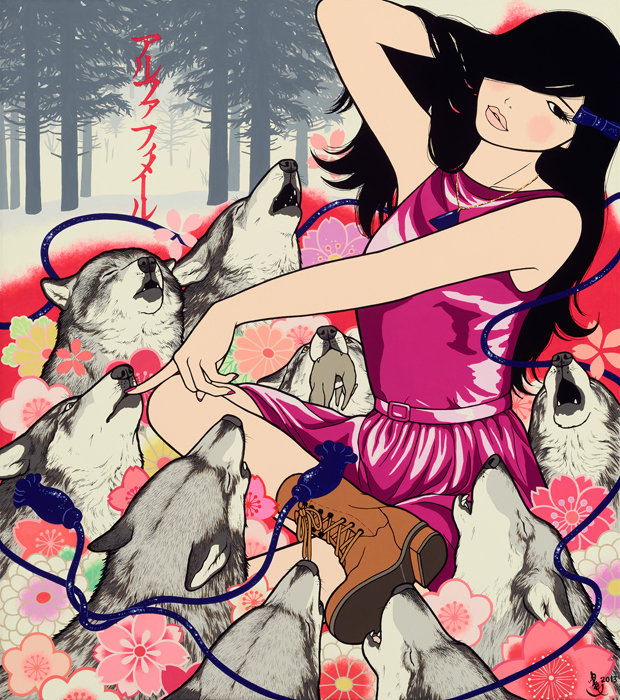 24. Over the course of your career this relationship between woman and animal has developed and matured and even become more complex. As the seasons change, so to does your paintings.
24. Over the course of your career this relationship between woman and animal has developed and matured and even become more complex. As the seasons change, so to does your paintings.
Do you purposely create paintings which correspond to the season you are working in? For example, if it is spring, do you choose to paint subjects having to do with spring?
Not necessary. The season doesn’t effects for my work.
25. Objects from traditional Japanese culture frequently appear as well. Do you feel it is important to maintain a connection with your native culture?
I don’t feel it’s important for me, but I just adore drawing Japanese culture.
27. Do you see your art as a means of presenting Japanese culture to a western audience? Or do you see your use of these cultural elements in more of a pop art method – removing the cultural relevance from the depicted objects and looking more for a certain effect or “image” devoid of the traditional meaning?
They are no walls between. It’s just like a collage, anything can goes as long as it creates a balance in my painting.
28. I notice that each piece contains a statement of theme written in Japanese caligraphy. Do you choose this script prior to starting a piece? Is this the generating impulse for the piece, or is it more a summation of the events taking place within the canvas?
Usually the title of the painting comes first, and then it’s always in the painting. It’s a part of the whole design.
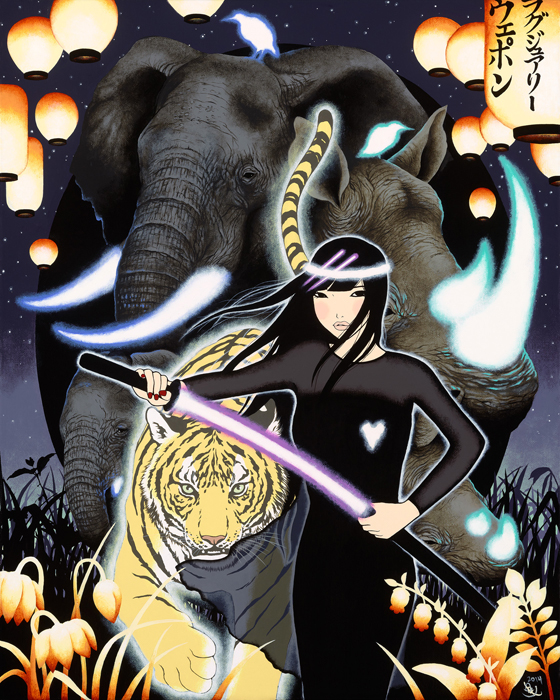 29. While subtle, I detect an environmentalist theme in many of your canvases. Your love of the environment is clear and in many instances you appear to be trying to express dismay at events that are happening around the globe to the natural environment. For instance, the harvesting of ivory by poachers. In one canvas the female character is seen protecting an elephant, rhinoceros, and tiger with a glowing sword that is at the same time a traditional samurai sword and a high-tech light saber.
29. While subtle, I detect an environmentalist theme in many of your canvases. Your love of the environment is clear and in many instances you appear to be trying to express dismay at events that are happening around the globe to the natural environment. For instance, the harvesting of ivory by poachers. In one canvas the female character is seen protecting an elephant, rhinoceros, and tiger with a glowing sword that is at the same time a traditional samurai sword and a high-tech light saber.
Do you want your art to send a message of environmental protection to your audience?
Obviously, I do. In the beginning, the idea was introduce wildlife for “Cool People”. Many wildlife or animal welfare campaigns are designed only to effect animal lovers. I just wanted transfer this idea. Cool design, for cool young people. Not just for people who gives it their all for animal welfare. I know it may not change the world. But I want to share how I feel.
30. I’m curious to know what it is like for a Japanese woman to be living in Seattle. What were some of the adjustments you had to make when transitioning from a life in Japan to a life in the Northwestern city?
First it’s a big challenge to live with a different language. I’m still trying to get used to it. Also the casual way people will talk to others, even if it’s a stranger. I grew up in a “formal” culture, so to be casual isn’t so easy.
31. Were Seattle’s residents accepting of you?
Well, at any event in Seattle I see a big crowd and they adore me. I’m very happy.
32. I’m curio us to know about your dog! What is your dog’s name and what is their breed? How long have you had them?
us to know about your dog! What is your dog’s name and what is their breed? How long have you had them?
My dog is Kit, a 4 years old Papillon boy. My husband and I adopted from a local rescue group about 3 years ago. To help raise awareness of rescued animals, I started Kit’s blog and FB page. He is their ambassador.
34. The female character in your paintings dresses in everything from contemporary western clothing to traditional Japanese outfits worn by the Geisha. Do you yourself dress in these varied ways?
I usually dress modern western, occasionally I’ll wear a Kimono too. In my paintings, they are Geisha in special kimonos. But also women in just regular Kimonos.
35. Along with the countless variations of dress seen on the girl, there are also a countless variety of hairstyles to go with them. I’m curious to know how you become inspired when creating a new style of hair for your character. Do you frequent a hair stylist yourself? Or do you look at fashion magazines for inspiration?
I always love long hair myself, and for my artwork also. Just because I like to draw, I will vary hairstyle, to some types I’d like to have. I see fashion magazine, but I love 70-80’s big hair.
36. You 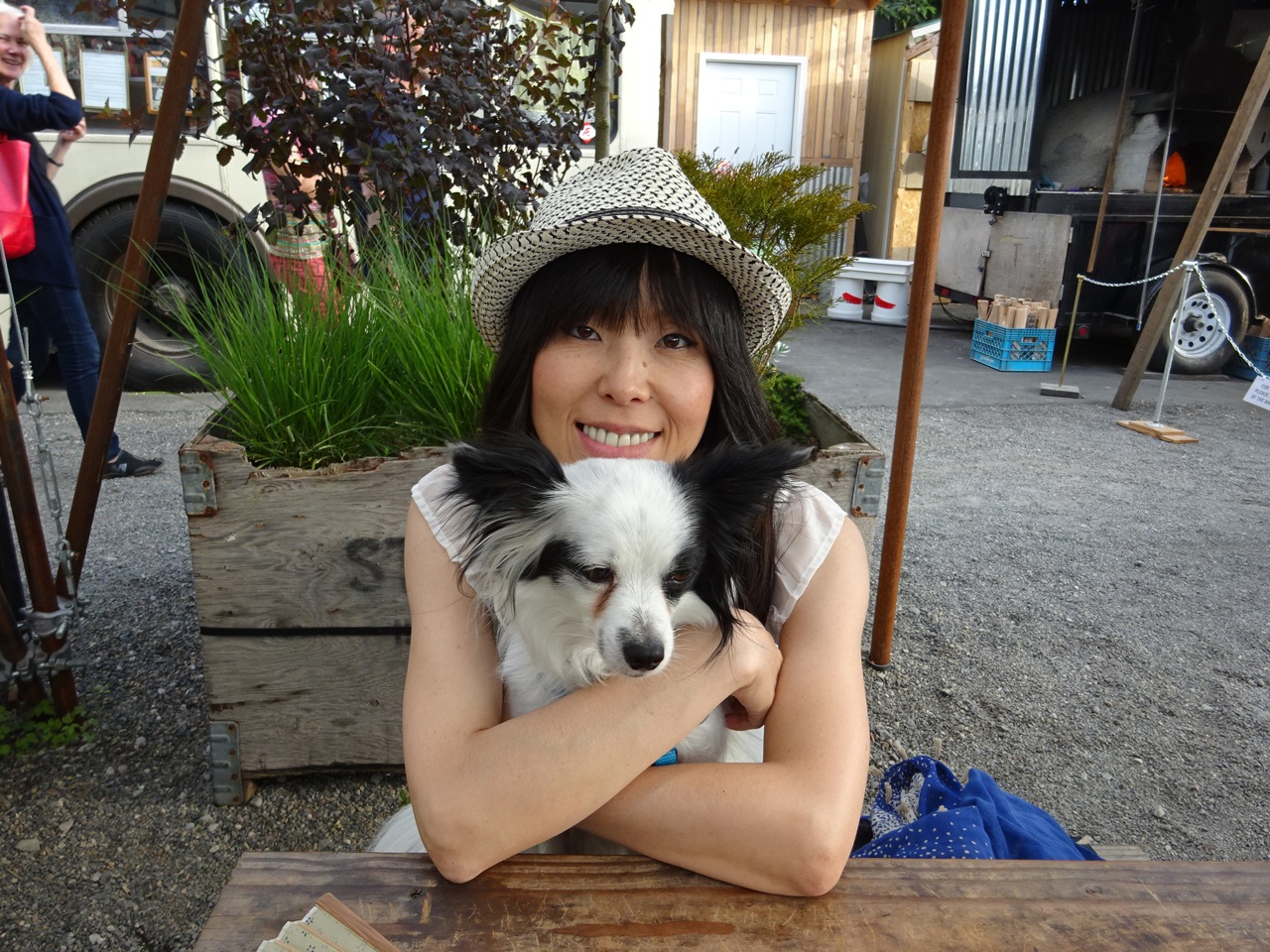 are extremely prolific and have published two books over the years containing beautiful reproductions of your work. Most recently you published “Yumiko Kayukawa – Japanese Wolf “. I’d imagine putting these books together must require a tremendous amount of work.
are extremely prolific and have published two books over the years containing beautiful reproductions of your work. Most recently you published “Yumiko Kayukawa – Japanese Wolf “. I’d imagine putting these books together must require a tremendous amount of work.
How do you go about choosing paintings to be included in the book? You must have to leave a lot of your work out in order to present and publish a book of your work?
The publisher Kirk Pedersen from Zero + Publishing and I picked about 100 each of our favorite works. We discussed what should stay or go, and then we narrowed it to around 90 works. It was pretty tough.
39. Can you tell us about some of the pieces you are currently working on?
I’m working on 2 group shows right now. One of them is the Coaster Show at the La Luz De Jesus Gallery. The other one is lyric show, which themed of song lyric at the Inner State Gallery.
I absolutely love your work and look forward to seeing more from you in the future!
Thank you so much for taking the time to chat with Ninjagirl!
Domo Arigato, Ninja Girl! Matane!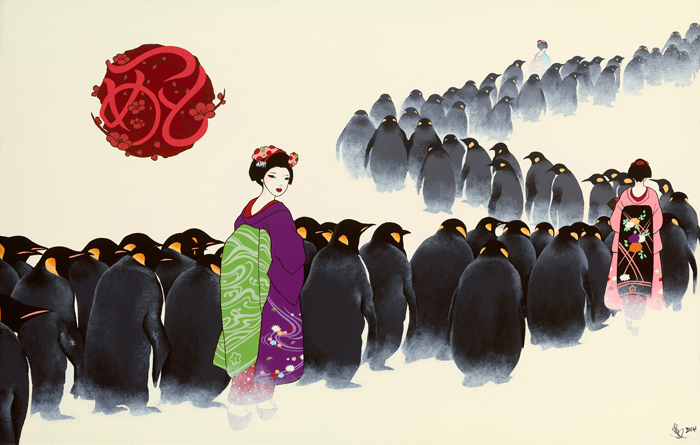
edited by Anthony Heller


You must be logged in to post a comment Login